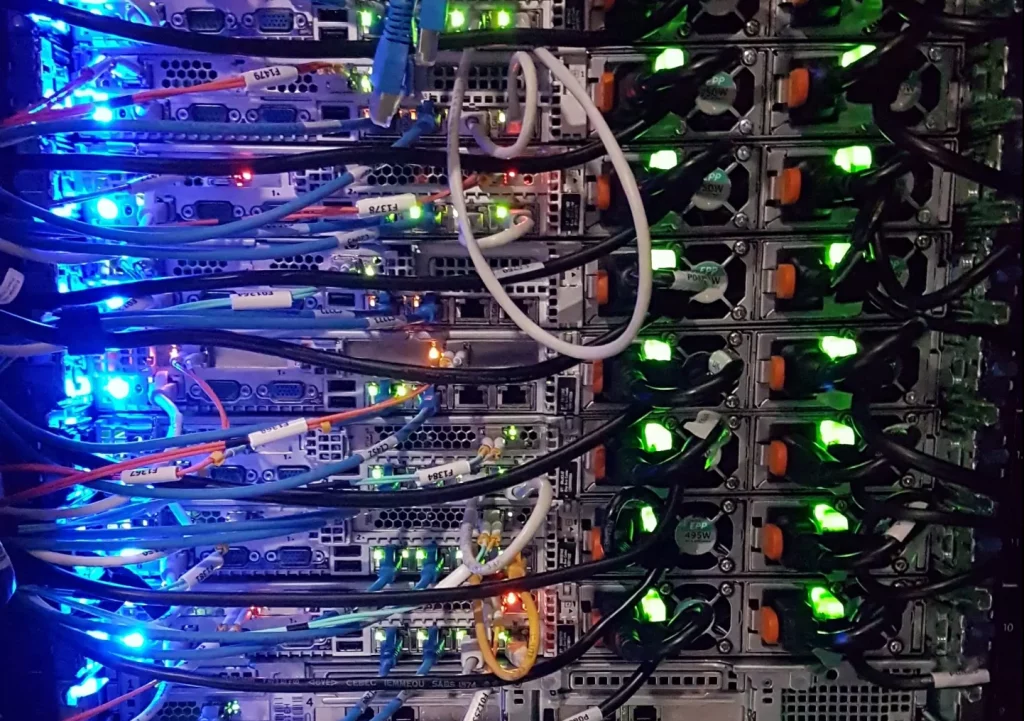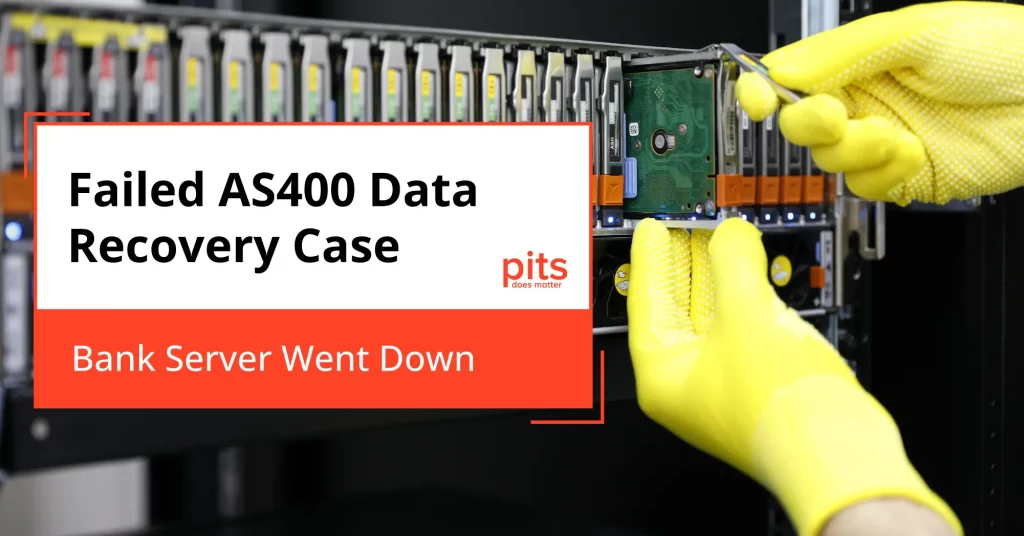Server failure scenarios can be the source of immense stress and potential financial loss, especially within the banking sector, where data integrity and uptime are crucial. In the event of a failure, many organizations find themselves at a loss for what to do next, resulting in prolonged downtime and lost revenue.
In our latest recovery operation, we faced that kind of event; one of the local banks in New Jersey contacted us for onsite recovery for their IBM AS/400 server.
The Bank server experienced a sudden and devastating crash when two of four hard drives in an IBM AS/400 system failed. These drives were part of a large array storing 35TB of sensitive, imperative data. This study case will delve into the strict data recovery process and the lessons learned that can help prevent future catastrophes and ensure business continuity.
Background of the AS 400 Server Failure Case
The AS 400 server, an IBM powerhouse, is recognized for its robustness and reliability in enterprise environments. However, like any other server, it is not immune to failures. A sudden crash can occur for various reasons, such as power outages, hardware malfunctions, or software issues.
The bank server, a critical component of the institution’s infrastructure, experienced an unexpected and disruptive event when two out of its four hard drives failed simultaneously. This unforeseen occurrence resulted in not only significant data loss but also the disruption of the institution’s operations. Given that the server housed crucial financial information and handled transactions, the impact of these disk failures was profound and necessitated immediate remedial actions.
Despite AS 400’s advanced fault tolerance, the RAID system could not withstand two drive failures, and the bank found itself in a critical situation requiring immediate data recovery efforts.
Failed IBM AS 400 Impact
The bank faced several challenges following the AS/400 server failure. These challenges included disruptions to critical financial services, such as online banking and ATM transactions, which impacted customer satisfaction and trust. Other impacts were:
Loss of sensitive data
The crashed server stored crucial financial data, including customer information and transactions. This data loss posed a significant risk to the institution’s security and required immediate recovery.
Business disruption
As a result of the crash, the bank could not process transactions and access important records, leading to a halt in its operations.

Financial implications
The downtime and data loss caused by the server failure resulted in significant economic losses for the bank. In addition, the data recovery process required special expertise and resources, adding to the overall cost.
"*" indicates required fields
Requesting Onsite Data Recovery
After assessing the severity of the situation, the bank contacted PITS Global Data Recovery Services to assist with the AS 400 server failure. Our recovery experts arrived on site to assess the damage and determine the appropriate action.
Our first step was creating a mirror image of the damaged drives, ensuring no further data loss occurred. We then analyzed and diagnosed the extent of the damage to determine the best recovery approach.
AS/400 Server Recovery Process
Our certified technicians meticulously carried out the data recovery process for the AS 400 server. They began by creating sector-by-sector clones of the remaining drives, a crucial step to safeguard against additional data loss during the recovery attempt.

With the clones in place, our team diligently worked to reconstruct the server’s complex RAID array, which required precision and in-depth knowledge of the system’s architecture. The proprietary nature of the AS 400 system further complicated the process, demanding a specialized approach tailored to its unique configuration and data storage patterns.
After re-establishing the RAID architecture, the technicians utilized advanced data recovery software to recover and piece together the corrupted data.
They managed errors encountered during the recovery using custom-developed scripts and tools designed to work with the specific filesystem the AS 400 server used.
Successful AS/400 Server Data Recovery
Our experienced technicians successfully recovered data from two of the four hard drives, part of a large 35TB HDD array. This intricate process involved high-precision equipment and proprietary data reconstruction algorithms specifically designed for the complexities of IBM AS/400 server system environments. Despite the extensive damage initially assessed, our team’s expertise and dedication led to restoring critical financial data, preventing further operational and reputational damage to the bank.
In conclusion, the AS 400 server failure experienced by the bank is a testament to the importance of proper data backup and recovery procedures. The incident highlights the critical role of reliable data recovery experts in safeguarding business continuity and mitigating the effects of unforeseen events.
If your financial institution relies on the robust but occasionally fallible IBM AS/400 server, don’t wait for a crisis to ensure your data’s safety. Contact PITS Global Data Recovery Services today to learn about our specialized IBM Server Data Recovery solutions. We offer preemptive data recovery planning, real-time support, and expert recovery services designed to mitigate disruptions and protect your critical data.
Frequently Asked Questions
Can data be recovered after an IBM AS/400 server failure?
Yes, with the expertise of data recovery specialists who are knowledgeable about the proprietary systems of the IBM AS/400, data can often be successfully recovered even after severe system failures.
What steps are taken to ensure no further data loss during the recovery process?
The initial step is to create sector-by-sector clones of the drives to preserve the original data. This is followed by thorough diagnostics to plan the recovery process without causing additional damage.
Is it possible to reconstruct a RAID array after multiple drive failures?
Reconstructing a RAID array is complex, especially after multiple drive failures, but with advanced data recovery techniques and in-depth knowledge of the system’s architecture, it can be achieved successfully.
How can businesses prepare for potential server crashes and data loss?
Establishing regular backups, having a disaster recovery plan in place, and working with data recovery services for preemptive planning are crucial steps in preparing for potential data loss or server crashes.
